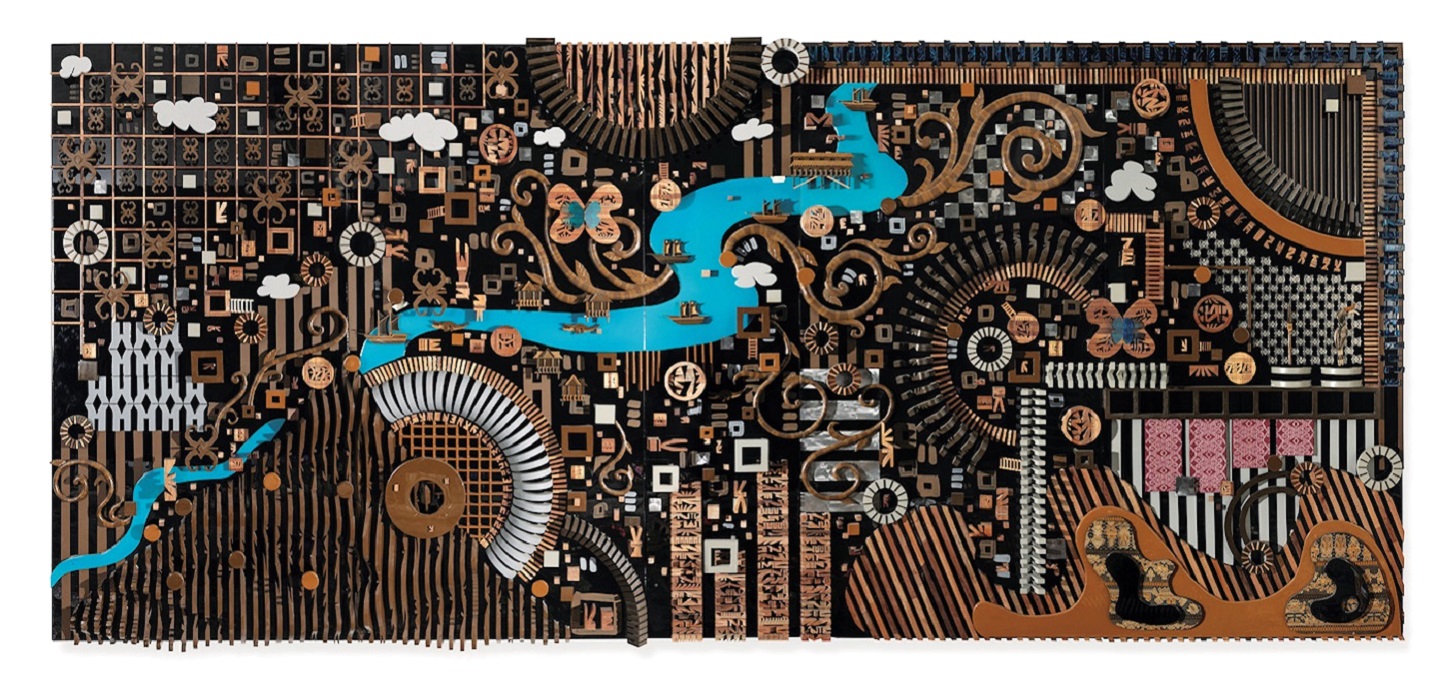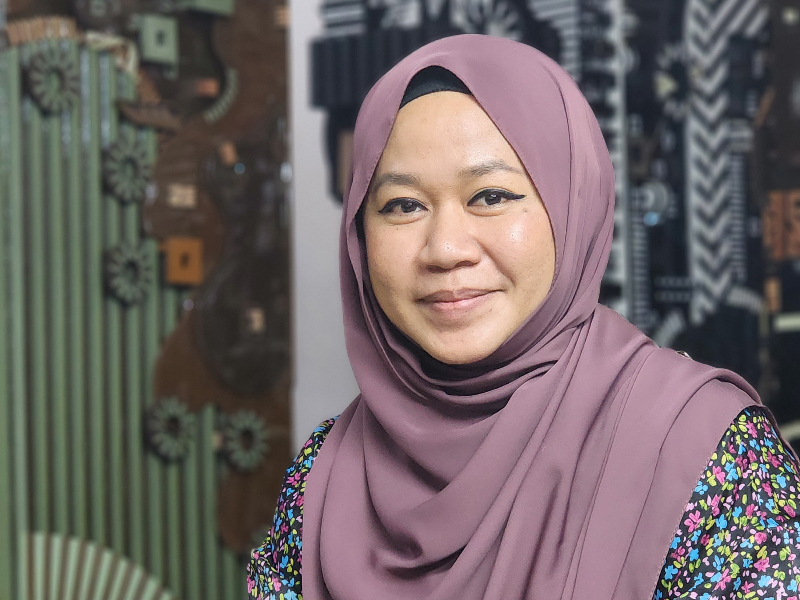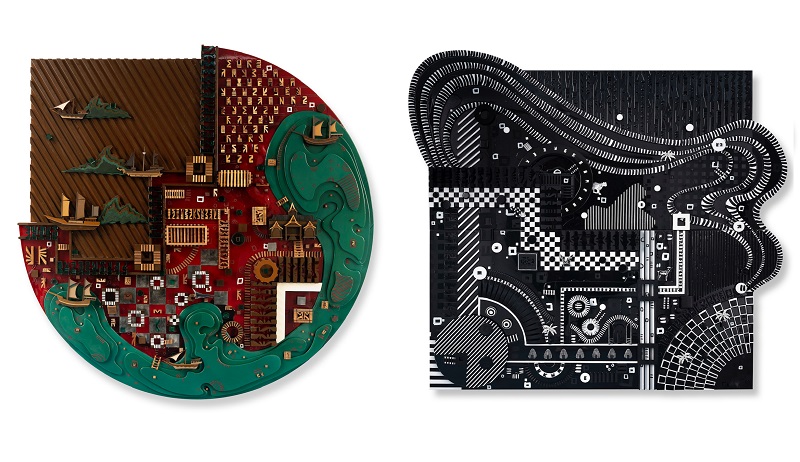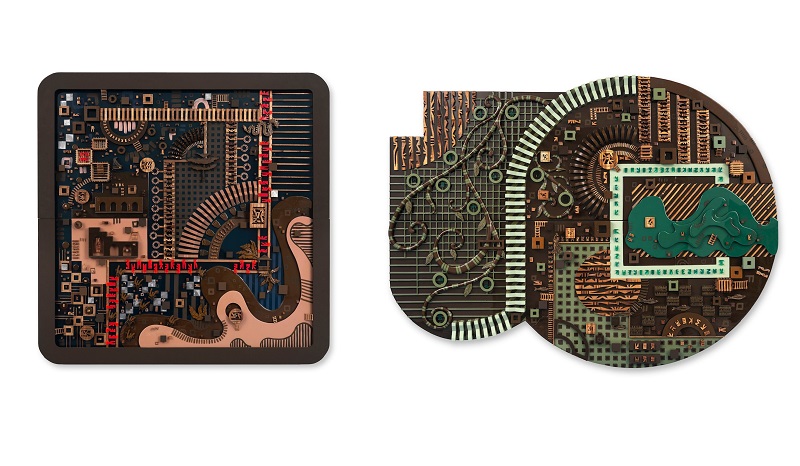
'Lagenda Puteri Santubong' (Photo: Anniketyni Madian)
You know you are approaching sculptor Anniketyni Madian’s second-storey studio when you see wood shavings — a light brown dusting on the stairs and bannister — which are indicative of her work with timber. As she greets us with a broad smile, the smell of chemicals (her latest body of work incorporates resin) wafts through the air; not by any means unpleasant, although an unusual scent for an art studio. Making our way to a small seating area, we carefully step around panels of yellow resin that have hardened on the floor in flourishes. She laughs, and says in her lilting Bahasa Malaysia, “Tak apa, jalan je.”
Anniketyni, one of the country’s most established sculptors, is in the final stages of completing works for her second solo exhibition; the first was held in 2017. The surprise announcement of the general election has wreaked havoc on her plans for Susey, originally scheduled to be held at Rimbun Dahan in Kuang, Selangor, this month. It would have been a homecoming of sorts, since Anniketyni had done a residency there in 2014. But the show, as the adage says, must go on and her new pieces will be available for sale to anyone willing to make the trek to her Petaling Jaya studio to see them, or to a space in Kajang, where a second batch is located.
The journey to either location is worth the effort. A sculptor whose wood works feature a signature aesthetic, Anniketyni leapt to the forefront of the genre locally owing to her portfolio of works that are filled with subtle nuances of material exploration, commentary on the evolving role of craft traditions and insights into the Iban, Sarawakian and Muslim heritage. Her oversized pieces, which include commissions by the Mall of Medini in Johor Baru, the United Nations in Rome and the Corporate Art Award in Rome, uniquely combine woodworking and elements of calligraphy. The ability to bend a material as inflexible as wood to her will, producing softly organic shapes and movement, speaks of her mastery over her chosen medium.
20221101_110510.jpg

For her new showcase, Anniketyni draws inspiration from the folklore of her native Sarawak, the tradition of Iban pua kumbu textiles and local woodworking crafts. Matched with graphic stylisations of patterns, new materials with the introduction of resin and contemporary compositions, she encapsulates the cultural and socio-political histories and value systems of Malaysia as she considers heritage while imagining the future.
“I was inspired to do this when I was pregnant with my daughter,” she says. “I think I had this idea in my head for a long time, but being a mother really made me want to bring it to life. I believe there are so many stories in Sarawak that need to be told and I took it as my role to relate them through the medium of contemporary art. This collection has more colour than my previous works and I think being a mother has something to do with this too. Resin is something new, and it has been a huge financial investment to master my usage of this material because I want it to be perfect. It has been a long journey to complete these works, especially working through Covid-19.”
In producing Susey, Anniketyni began with the foundations of wood carving that are her signature. Continuing to stylise patterns lifted from pua kumbu fabric, she adds recognisable imagery such as crocodiles, palm trees, ships and clouds as visual references to the folklore that a particular sculpture is based on. “It’s about introducing Bornean elements in a contemporary way. For example, most people only know the pua kumbu in its application as fabric. Why not in fine art? When I started to incorporate pua kumbu into my previous works and more people started to understand what it was, I realised the tool I had to showcase my heritage to a wider audience.”
anniketyni_madian.jpg

The most outstanding artwork in Susey is undoubtedly Lagenda Puteri Santubong, a massive 244cm x 549cm piece that brings to life the legend of the warrior princess who was cursed by the king of the heavens, resulting in her mortal form being recast as a mountain that bears her name. “This was the main piece because Puteri Santubong is well known in Kuching,” she says. “It is why I used actual pieces of pua kumbu fabric and pieces from a traditional Sarawakian silver belt. It’s not something I’ve done before.”
Also unique are five totem pole-like sculptures that stand 7ft tall — representing the five calls to prayer each day — and each tells a specific story. These pieces mark the most significant departure from her previous bodies of work, which were generally circular and not free-standing. They also tend to be monochromatic — save of course, for the natural wood grains — while the totem poles, like the rest of the pieces in Susey, incorporate swathes of coloured resin.
An anomaly among these free-standing works is Dasi & Nian, which is in black and white. Standing out starkly from its predominantly wood-based brethren, it is remarkably detailed and draws its colour scheme from P Ramlee-era black-and-white films.
anniketyni_madian_1.jpg

Anniketyni discovered that several versions of each folklore exist in Sarawak, and she wondered how the stories came about, how they began to diverge from each other, and which were the most endorsed versions. She selected a series of folklore that had been her own childhood favourites and read five or six versions of each before discussing them with her mother, a storyteller well-versed in Sarawakian culture. From there, she chose the versions that resonated the most with her and translated those stories into sculptures.
“I had to ask my mother about many of these stories that I first heard of as a child — and there are multiple versions of each story. It was also to work out which one I was going with. I am process-driven, and I sketch a lot before starting on any project. Translating the stories into the final artworks was very challenging because while I was telling a story, I had to make sure each piece had my signature aesthetic while establishing a new look. Each piece also had to be very different from the others, so the stories would stand out.” The effort, she says, was worth it. “I think the final result more than surpassed all my expectations.”
Susey marks a remarkable evolution for Anniketyni’s oeuvre owing to the nature of her new pieces that incorporate more than just wood. They also teem with detail, giving the viewer something new to discover each time you look at them. In this next step of her sculptural practice, she demonstrates her ability to technically construct sculptures in the vein of paintings, layered images, form and colour to achieve new depths.
'Susey' is now available for private viewing; contact Azhar Kurai Ahmad at (019) 330 9984 to make an appointment.
This article first appeared on Nov 7, 2022 in The Edge Malaysia.


